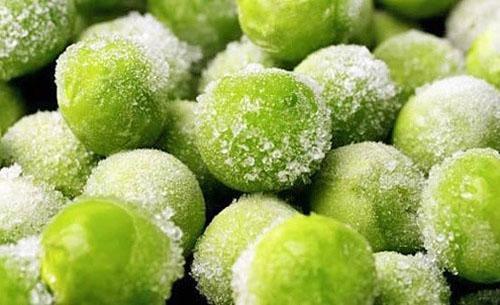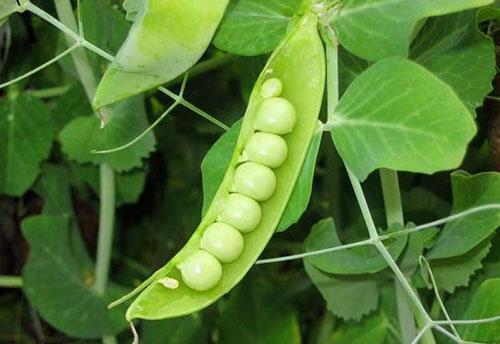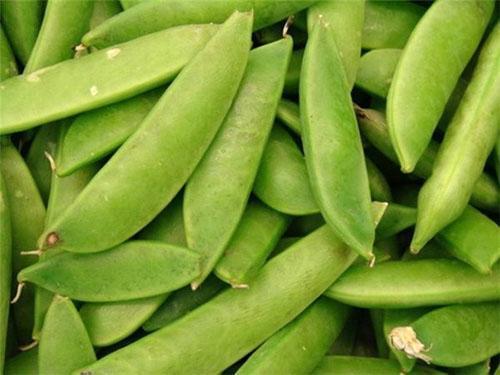Several ways to freeze peas for the winter
 For a long time mankind loves green peas, both raw and cooked, combining them with many dishes. Alas, this magnificent vegetable has a seasonal character and is available fresh for us only a few weeks a year. People have long been trying to find a way to harvest it for future use, but before it was possible to save peas only in a dried version. You can use such a product only for soups or mashed potatoes, since due to its high rigidity it has to be boiled for a long time.
For a long time mankind loves green peas, both raw and cooked, combining them with many dishes. Alas, this magnificent vegetable has a seasonal character and is available fresh for us only a few weeks a year. People have long been trying to find a way to harvest it for future use, but before it was possible to save peas only in a dried version. You can use such a product only for soups or mashed potatoes, since due to its high rigidity it has to be boiled for a long time.
Today, every housewife has the opportunity to preserve all the unique qualities of green fruits in the best way, for this you just need to know how to freeze peas for the winter.
Preparation of raw materials and the choice of freezing method

Young pods should be selected; they should not be lethargic, have spots and damage. It is best to choose not long pods, which contain up to 10 peas, but pay attention to their medium-sized counterparts, in which peas are in the amount of 5-6 pieces.
From the methods below, choose one or two that are most suitable for you. There are several ways to prepare peas in winter:
- Whole pods.
- Pods after blanching. Some housewives prepare amazing dishes using peas along with skins.
- Freezing split peas.
- Freeze slightly overripe split peas.
Whole pods
 This is the simplest pea freezing for the winter. Pea pods are thoroughly washed under running water, laid out on clean rags or towels and dried well. Then they are packaged and frozen.
This is the simplest pea freezing for the winter. Pea pods are thoroughly washed under running water, laid out on clean rags or towels and dried well. Then they are packaged and frozen.
Pods after blanching
For this method of harvesting, the pods of green peas must be necessarily young and sweet varieties! Overripe peas will not work!
 Until the pod is fully ripe, the peas inside it are in a state of milky maturity, and the skins themselves are unusually tender. This is because the parchment-like film has not yet formed inside.
Until the pod is fully ripe, the peas inside it are in a state of milky maturity, and the skins themselves are unusually tender. This is because the parchment-like film has not yet formed inside.
 Such pods are sorted, washed, then the tails and hard ends are cut off from the other edge, after which all the blanks are chopped, placed in a colander, blanched for a short time, dipping it in boiling water. Then they are quickly transferred into cold water, thrown back, dried, packed in boxes and frozen. This freezing option can be stored until the next harvest during the year.
Such pods are sorted, washed, then the tails and hard ends are cut off from the other edge, after which all the blanks are chopped, placed in a colander, blanched for a short time, dipping it in boiling water. Then they are quickly transferred into cold water, thrown back, dried, packed in boxes and frozen. This freezing option can be stored until the next harvest during the year.
Freezing split peas
 The collected peas are washed, dried, and then the skins are removed, collecting the grains separately. Crumpled, small and wrinkled peas are thrown away. Since the pods are already clean, the peas themselves do not need to be washed, which saves half the time. It is very beneficial to freeze just such peas for the winter.
The collected peas are washed, dried, and then the skins are removed, collecting the grains separately. Crumpled, small and wrinkled peas are thrown away. Since the pods are already clean, the peas themselves do not need to be washed, which saves half the time. It is very beneficial to freeze just such peas for the winter.
 Billets that have not been heat treated are quite tough. They are able to maintain their shape for a long time, so they are packed in ordinary plastic bags, removing air from there as much as possible.
Billets that have not been heat treated are quite tough. They are able to maintain their shape for a long time, so they are packed in ordinary plastic bags, removing air from there as much as possible.
Freezing slightly overripe split peas
 When we harvest the last crop of peas from the garden, as a rule, it is already a little overripe. It is not so tasty to eat it alive, but as preserved peas for the winter for cooking any dishes, it is quite suitable. The pods are washed, dried, peas are hulled out of them, placed in a colander in small batches and immersed in a saucepan of boiling water for several minutes. This is done so that the grains do not lose color; heat treatment removes the enzyme from the peas, which can cause them to turn black.
When we harvest the last crop of peas from the garden, as a rule, it is already a little overripe. It is not so tasty to eat it alive, but as preserved peas for the winter for cooking any dishes, it is quite suitable. The pods are washed, dried, peas are hulled out of them, placed in a colander in small batches and immersed in a saucepan of boiling water for several minutes. This is done so that the grains do not lose color; heat treatment removes the enzyme from the peas, which can cause them to turn black.
 Then it is quickly removed and placed in ice water, after which it is dried on a rag or napkins and frozen in several stages. So that such peas do not stick together or deform, they are placed on a flat tray and placed in the freezer until hardened, then they are poured into a container and the next batch is frozen.
Then it is quickly removed and placed in ice water, after which it is dried on a rag or napkins and frozen in several stages. So that such peas do not stick together or deform, they are placed on a flat tray and placed in the freezer until hardened, then they are poured into a container and the next batch is frozen.
Some helpful tips
- If you need to freeze a large batch of peas, it is better to find helpers, or freeze in parts. The fact is that with prolonged contact with air, the grains harden rather quickly, since their skin coarsens. If there are no assistants, it is worth peeling the peas in small portions, blanching, packing, and only then take on the next batch.
- Pea pods should not be dried for too long, they dry quickly.
- Before blanching the peas, put a container with cold water and ice cubes near a pot of boiling water. After the peas are ready, they must be quickly immersed in ice water, so they will not be digested.
- The blanching process should not exceed three minutes.
- Each package or any container with frozen food must be signed with the date of freezing.
- The maximum shelf life of frozen peas is one year.
- If you plan to cook some kind of dish from the prepared peas, you should not defrost it. You just need to pour the required amount from the freezer and immediately add it to the pot or pan.
- Frozen green peas can not be added to dishes, but can be steamed separately.
Peas frozen with any of the options do not lose their vitamins and nutrients. It has a long shelf life and is an excellent addition to a wide variety of dishes. All this will be available all year round, if you learn how to harvest it correctly in the winter.